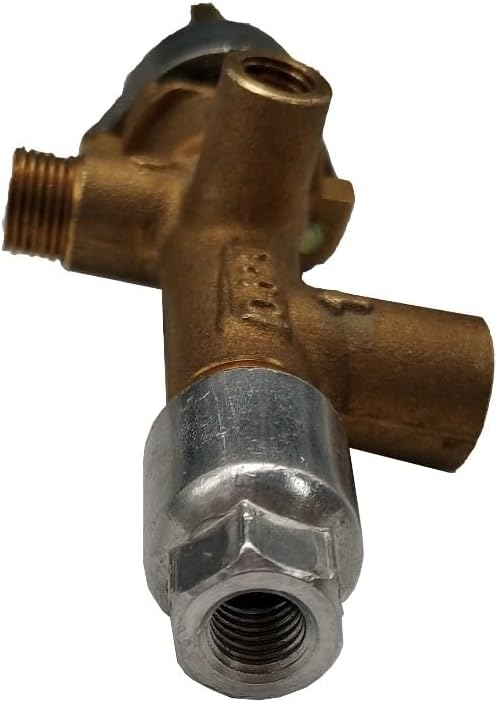Page Contents
Details: Propane Gas Room Space Heater & Outdoor Patio Heater Replacement Parts Gas control Safety Valve Main Valves 2PCS/lot
Brand: GAJUST
Advantages
- Products can be returned
- We are a professional accessory manufacturer, and each product is strictly tested for quality before leaving the factory.
- Low pressure 65mbar gas valve thermocouple end M81
- 7/16-20UNS thread on outlet & M101 On inlet side
- M81 female thread on pilot port for 4mm copper or alumium tube on pilot burner side
- Shaft for 8mm knob
Notice
- Is an online purchase
- Delivery may be delayed in some areas.
Buyer Guide For Patio Heaters
Fuel Type. Choose between propane, natural gas, or electric heaters. Propane is portable but needs refilling, natural gas requires installation but is cost-effective, and electric heaters are convenient but may increase energy bills.Heating Power. Look at BTU (British Thermal Units) ratings. Most residential patio heaters range from 40,000 to 50,000 BTUs. Higher BTUs mean more heat output and larger coverage area.
Coverage Area. Consider the size of your outdoor space. Calculate the square footage you need to heat and match it with the heater’s coverage capabilities.
Safety Features. Look for units with:
- Auto shut-off if tipped over
- Protective grills
- Weather-resistant construction
- Stable base design
Mobility. Consider if you need to move the heater around. Look for models with wheels if portability is important.
Weather Resistance. Ensure the heater is suitable for your climate and has proper weather protection features.
Style and Design. Choose a design that complements your outdoor d?cor. Options include standing, mounted, or tabletop models.
Cost and Maintenance. Factor in both purchase price and long-term operating costs. Consider maintenance requirements and parts availability.
How to use Patio Heaters
Patio heaters are excellent solutions for extending outdoor enjoyment during cooler weather. Here’s a comprehensive guide on how to use them safely and effectively.Proper Placement
- Position the heater on a flat, stable surface
- Keep at least 3 feet clearance from walls, furniture, and flammable materials
- Avoid placing under covered areas with low clearance
- Ensure the heater is protected from strong winds
Starting and Operating
1. Check fuel levels (propane tank or electrical connection)
2. Follow manufacturer’s lighting instructions
3. Allow 5-10 minutes for the heater to reach full temperature
4. Adjust heat settings as needed for comfort
Safety Tips
- Never leave the heater unattended while in use
- Keep children and pets away from the unit
- Turn off and disconnect when not in use
- Store properly during adverse weather conditions
- Regularly check for damage or wear
Maintenance
- Clean the heater regularly
- Check fuel connections for leaks
- Replace parts as needed
- Store in a dry place during off-season
How to Maintain Patio Heaters
Regular maintenance of your patio heater ensures optimal performance and longevity. Start by cleaning the unit regularly, removing dust and debris. Check the gas connections for leaks using soapy water and inspect the burner for blockages. Replace any worn parts promptly.Store your heater in a dry place during off-seasons, and cover it when not in use. For propane heaters, ensure tanks are properly connected and stored safely. Clean reflectors and heating elements to maintain efficiency.
Always follow manufacturer guidelines for specific maintenance requirements and safety procedures. Professional servicing is recommended annually for optimal performance and safety.




